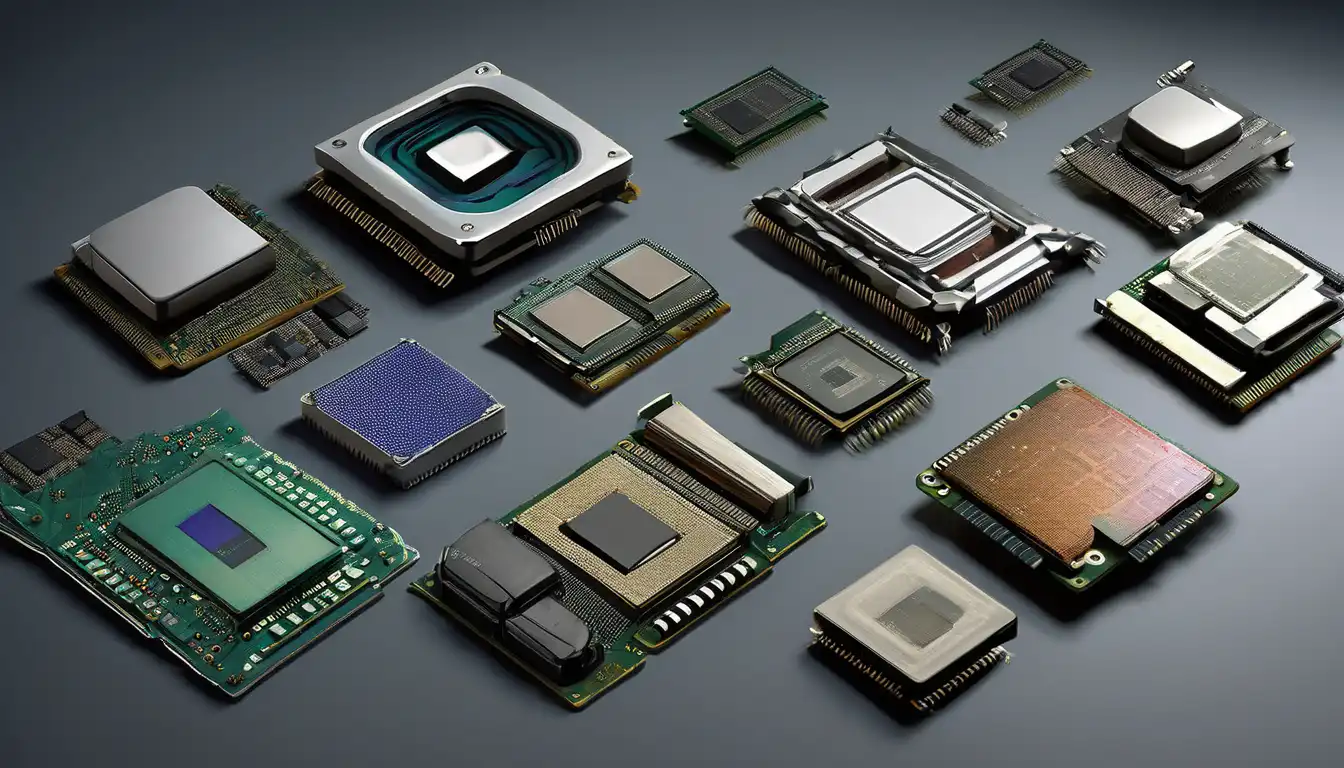The Dawn of Computing: Early Processor Technologies
The evolution of computer processors represents one of the most remarkable technological journeys in human history. Beginning with primitive mechanical calculators in the 19th century, processor technology has advanced at an exponential pace, fundamentally transforming how we live, work, and communicate. The first true processors emerged during World War II, with massive vacuum tube-based systems that occupied entire rooms yet possessed less computing power than today's simplest calculators.
These early processors operated at speeds measured in kilohertz and required enormous amounts of electricity and cooling. The ENIAC, completed in 1945, used approximately 17,468 vacuum tubes and weighed nearly 30 tons. Despite its limitations, this groundbreaking machine demonstrated the potential of electronic computing and laid the foundation for future developments in processor architecture and design.
The Transistor Revolution: 1950s-1960s
The invention of the transistor in 1947 marked a pivotal moment in processor evolution. Transistors replaced bulky vacuum tubes, offering greater reliability, lower power consumption, and significantly smaller size. By the late 1950s, transistors had become the standard building block for computer processors, enabling the development of more compact and efficient computing systems.
During this period, IBM emerged as a dominant force in computing, introducing processors that could handle both scientific and business applications. The IBM 700 series, introduced in the 1950s, represented significant advancements in processor design, featuring improved instruction sets and memory management capabilities. These systems paved the way for the commercial computing revolution that would follow in subsequent decades.
The Integrated Circuit Era: 1960s-1970s
The development of integrated circuits (ICs) in the late 1950s and early 1960s represented another quantum leap in processor technology. Jack Kilby and Robert Noyce independently developed methods for integrating multiple transistors onto a single semiconductor chip, dramatically reducing the size and cost of electronic components while improving reliability.
This era saw the emergence of the first microprocessors, with Intel's 4004 processor in 1971 marking a watershed moment. The 4004 contained 2,300 transistors and operated at 740 kHz, establishing the foundation for modern computing. Subsequent processors like the Intel 8008 and 8080 further advanced microprocessor technology, enabling the development of personal computers and embedded systems.
Key Developments in Integrated Circuit Technology
- Small-scale integration (SSI): 1-10 transistors per chip
- Medium-scale integration (MSI): 10-100 transistors per chip
- Large-scale integration (LSI): 100-10,000 transistors per chip
- Very-large-scale integration (VLSI): 10,000-1,000,000 transistors per chip
The Personal Computer Revolution: 1980s-1990s
The 1980s witnessed the explosion of personal computing, driven by increasingly powerful and affordable processors. Intel's x86 architecture, introduced with the 8086 processor in 1978, became the dominant standard for personal computers. The IBM PC, launched in 1981 with an Intel 8088 processor, established the architecture that would dominate computing for decades.
This period saw intense competition between processor manufacturers, with companies like AMD, Cyrix, and Motorola challenging Intel's dominance. The introduction of reduced instruction set computing (RISC) architectures offered alternative approaches to processor design, emphasizing simplicity and efficiency. Meanwhile, clock speeds increased dramatically, from a few megahertz in early processors to hundreds of megahertz by the late 1990s.
Notable Processor Milestones
- Intel 80286 (1982): First x86 processor with memory management
- Intel 80386 (1985): First 32-bit x86 processor
- Intel Pentium (1993): Superscalar architecture with 3.1 million transistors
- AMD K6 (1997): Competitive alternative to Intel processors
The Multi-Core Era: 2000s-Present
As processor clock speeds approached physical limits in the early 2000s, manufacturers shifted focus to multi-core architectures. Instead of increasing clock frequency, processors began incorporating multiple processing cores on a single chip. This approach allowed for improved performance while managing power consumption and heat generation more effectively.
The transition to multi-core processing represented a fundamental shift in processor design philosophy. Software developers had to adapt to parallel programming paradigms to fully utilize these new architectures. Intel and AMD introduced various multi-core implementations, from dual-core to octa-core and beyond, each offering different performance characteristics and target applications.
Modern Processor Technologies and Future Directions
Today's processors incorporate billions of transistors and employ sophisticated technologies like out-of-order execution, speculative execution, and advanced caching strategies. The ongoing miniaturization of transistor features, following Moore's Law, has enabled unprecedented levels of integration and performance.
Current trends in processor evolution include heterogeneous computing architectures, artificial intelligence acceleration, and specialized processing units for specific workloads. The emergence of quantum computing represents the next frontier in processor technology, potentially offering exponential performance improvements for certain types of calculations.
Emerging Technologies Shaping Future Processors
- 3D chip stacking and packaging technologies
- Neuromorphic computing architectures
- Photonic computing and optical interconnects
- Quantum computing processors
- AI-optimized hardware accelerators
The Impact of Processor Evolution on Society
The dramatic evolution of computer processors has fundamentally transformed nearly every aspect of modern society. From enabling global communication networks to powering scientific research and driving economic growth, processors have become essential infrastructure supporting contemporary civilization.
The continuous improvement in processor performance has made previously unimaginable applications possible, from real-time language translation to autonomous vehicles and advanced medical imaging. As processor technology continues to advance, we can expect even more transformative applications to emerge, further reshaping how we interact with technology and each other.
The journey from vacuum tube computers to today's multi-core processors demonstrates humanity's remarkable capacity for technological innovation. As we look toward future developments in quantum computing and beyond, the evolution of computer processors promises to continue driving progress across all fields of human endeavor.
